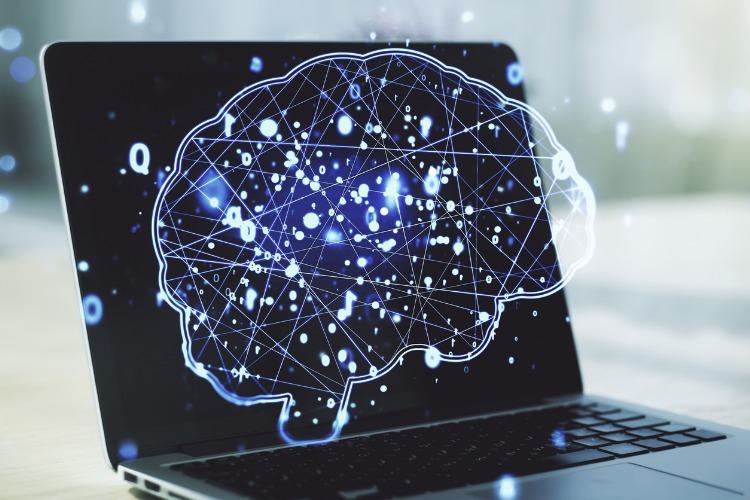How AI Will Give IT Professionals Their Time Back
The whole world has been dreaming about the possibilities of artificial intelligence for decades. Whether it’s cars capable of making critical decisions and driving themselves, or robots capable of lending a hand around the house, the potential is almost limitless. The benefits of AI aren’t limited to the everyday life of the consumer, however, and IT is just one sector set to reap the rewards as software becomes ever smarter.
Artificial intelligence has the potential to revolutionize the IT industry, evolving into a tool capable of making huge inroads into automation. While humans have often feared automation, with concerns machines will take our jobs, in reality AI and automation can make those jobs more efficient, particularly across the IT sector. Companies are looking for ways they can carry out more requests, prioritize jobs, and shift resources, so IT professionals can get the most out of their expertise, and AI is the technology designed to help businesses to achieve their goals.
Handling requests so IT professionals don’t have to
A huge number of IT requests are repetitive, mundane and low-level, draining resources and talent that could be better spent elsewhere. Think password resets, which happen again and again, with the potential for thousands of requests across bigger organizations. These are the time-consuming tasks AI and automation can handle, letting IT professionals instead prioritize the bigger, more technical and more creative jobs to help your company get ahead.
In short, AI is about making life easier, also allowing IT experts to focus on more important tasks. With AI handling the simple requests, IT professionals can assign resources to other incredibly time-consuming jobs, such as carrying out root-cause analysis and figuring out the issues with a negative impact on your business.
That doesn’t mean AI and automation is simply around to handle the jobs IT professionals don’t want to do. On the contrary, artificial intelligence and IT automation software can help organizations to embrace more efficient workflows, able to handle the most common issues employees experience. By picking up on keywords, and offering answers to questions automatically, common queries can be dealt with at a much quicker rate, improving workflow for IT professionals and helping employees at large to find solutions to their problems almost instantly.
Predicting downtimes in advance
Artificial intelligence can have an equally large impact when it comes to downtime, be it server or network outages, emergency changes, new releases, or other incidents. All are frequent in IT, and many are unavoidable, but knowing when downtime is likely to happen can make a huge difference to productivity and efficiency, potentially saving an organization thousands of dollars.
AI can recognize related incidents ahead of downtime, associating them with problems and giving IT teams the warning they need before it’s too late. With a head start, IT professionals can resolve issues faster, limit outages, and save the company both time and money.
Automating risk and impact assessment
Embracing artificial intelligence can also help us to avoid one of the biggest causes of downtime – human error. AI can be used to assess data, helping service providers to make informed choices without having to manually look through downstream impacts. With automation and artificial intelligence an integral part of the change management process, risks can be significantly minimized.
Where there are emergency changes, AI can suggest related configuration items (CIs). This means the complete downstream impact of any downtime or maintenance in the configuration management database (CMDB) can be automatically revealed, without requiring the time and expertise of IT professionals.
Implementing AI and automation
Adding self-service articles to an organization’s help desk knowledge base is one possible quick win for IT professionals, helping end users resolve their own issues without having to raise an IT ticket. AI-powered suggestions can be built on a foundation created from commonly submitted tickets or FAQs, making it easy to reap the rewards of automation.
Password resets are again a great example of how AI can be integrated into a business. It can be used to respond to keyword searches and suggest relevant articles to help end users perform a password reset themselves, freeing up time and resources for the IT team.
Ticket routing is another area worth considering, and if artificial intelligence is used to automatically route tickets to the correct queues, resources can instead be allocated to more important or time-critical tasks. This also applies when it comes to predefining processes, automating repetitive workflows, setting reminders, filtering, and tagging projects. After all, each job may only save minutes, but it all adds up, especially when IT professionals are processing hundreds of tickets each and every week.
Put simply, automation and artificial intelligence are the future of ITSM solutions. By embracing the capabilities offered by AI, we can ensure IT professionals no longer have to spend time carrying out manual and repetitive tasks, and can instead concentrate on driving a better user experience for employees, customers, and the business as a whole.

